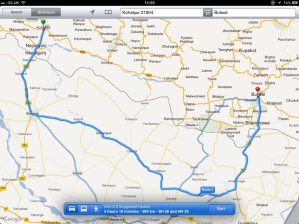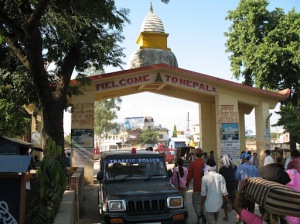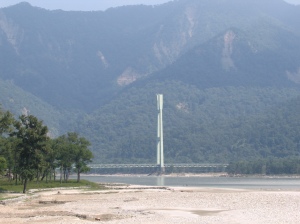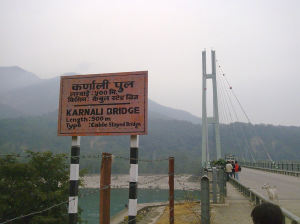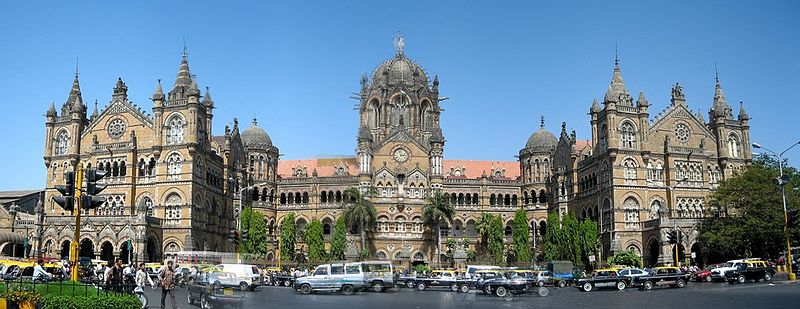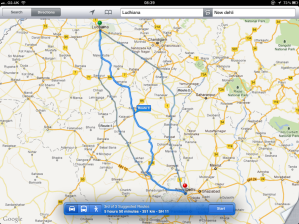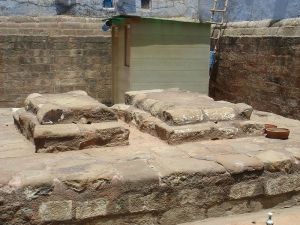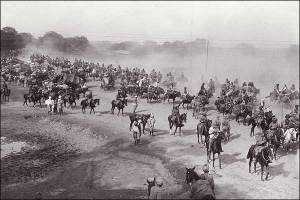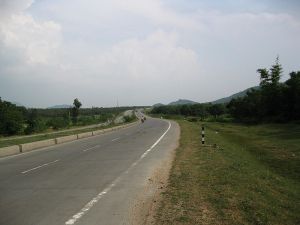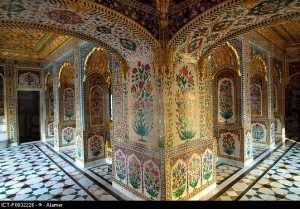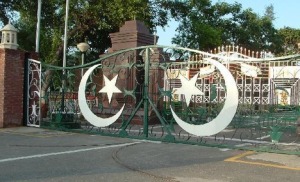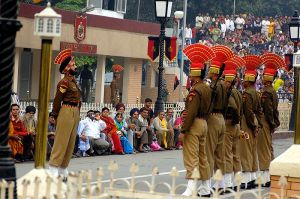This morning I had a breakfast of fruit, bread and cheese, most of which I had picked up from the market in Dhangadhi. I also bought some squeezed orange for 50 rupees (Less than a dollar). Juice bars seem popular here, so Nepal must be a fruit paradise.
Plotting my route this morning presented a bit of a problem for me. The rule is that I can only travel along the route that Google maps gives me. If it suggests more than one route, I can choose any one of them, but I must stick to the routes given. Entering Kohalpur and Butwal on my iPad, Google maps takes me back into India, west along the SH26 and then back into Nepal on the NH29, taking about six hours. This is despite the H01 taking me to the same place, but a much shorter route. I checked along the Google Earth view and the roads seem fine, but Google maps doesn’t have the data to get me there. So, sticking to the rules, I take the road south back into India.
Surprisingly, few travellers use the border crossing at Nepalgunj, despite the fact that Lucknow is only four hours south. The main observation is that you get mobbed by traders and it is full of cheap hotels and contraband goods. The border crossing itself is trouble free and I am through in no time.
The SH26 takes me through well farmed land, with fields on either side of the road. It’s not uniform like you would find in Germany, just like the irregular farming in the UK, but the soil is more redder in colour.
Is it me, or do the Nepalese do things with a little more style? I drive up and through Bhairahawa and pull over to top up the fuel tank at the Durga petrol station and buy more food at a stall across the road. I have never eaten so much fruit in my life, but it is readily available on every corner. Back on the Siddhartha highway, I head north towards Bulwal.
Oh, by the way, I found this great site for finding things in Nepal, including petrol stations. Alas, it seems a little Kathmandu-centric, if you are looking for a hotel, but otherwise useful. I ‘booked’ a room for the night in Hotel Sindoor, which had ample parking and the motto: To satisfy our honourable guest. Can’t go wrong, really.

